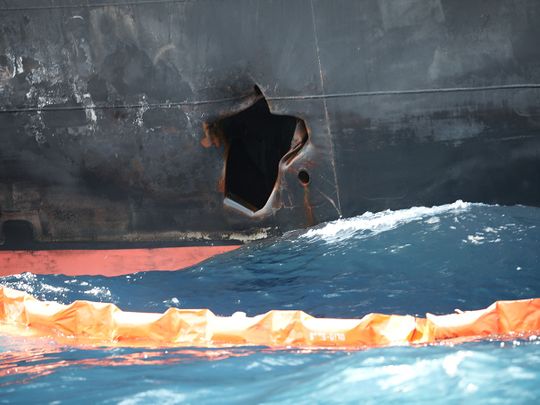
Dubai: A "flying object" which flew over a Japanese tanker before it was rocked by a blast in strategic Gulf waters last week could have been a reconnaissance drone, experts have told AFP.
The owner of the Kokuka Courageous said the tanker's Japanese and Filipino crew saw a "flying object", just before a blast that caused a fire on board the vessel, sparking a crisis between Washington and Iran.

"The crew members are saying that they were hit by a flying object. They saw it with their own eyes," Yutaka Katada, head of Kokuka Sangyo shipping company, said the day after the mysterious June 13 attack.
"We have received a report saying that something seems to have flew in, there was an explosion and it created a hole in the body of the ship," he told reporters in Tokyo.
Katada said the unidentified object flew over the methanol-laden tanker a first time - and returned a second time three hours later, when the blast went off.
The Kokuka Courageous was hit around the same time as another tanker in the area, the Norwegian-owned Front Altair, which was hit by three explosions, according to the Norwegian Maritime Authority.
They were transiting through the strategic Strait of Hormuz towards the Indian Ocean.
The United States - as well as Britain and Saudi Arabia - have accused Iran of being behind the attacks but Tehran has denied any involvement.
The US navy says limpet mines, classic maritime weapons used during World War II, were placed above the water level on the hull of the Kokuka Courageous, and caused the blast. Experts agree.
They point to evidence found after the attack of explosives linked to the cone-shaped devices that can be nailed or magnetically attached to the metal hull of a vessel.
"When we observe the evidence, it is not something caused by an object impacting the vessel," says Jean-Louis Vichot, a former director of the French Naval Academy and retired vice admiral.
"It is in fact a footprint of a limpet mine, one that has not exploded," he said.
"The crew spoke of a drone... maybe a device sent on a reconnaissance mission," Vichot added.












